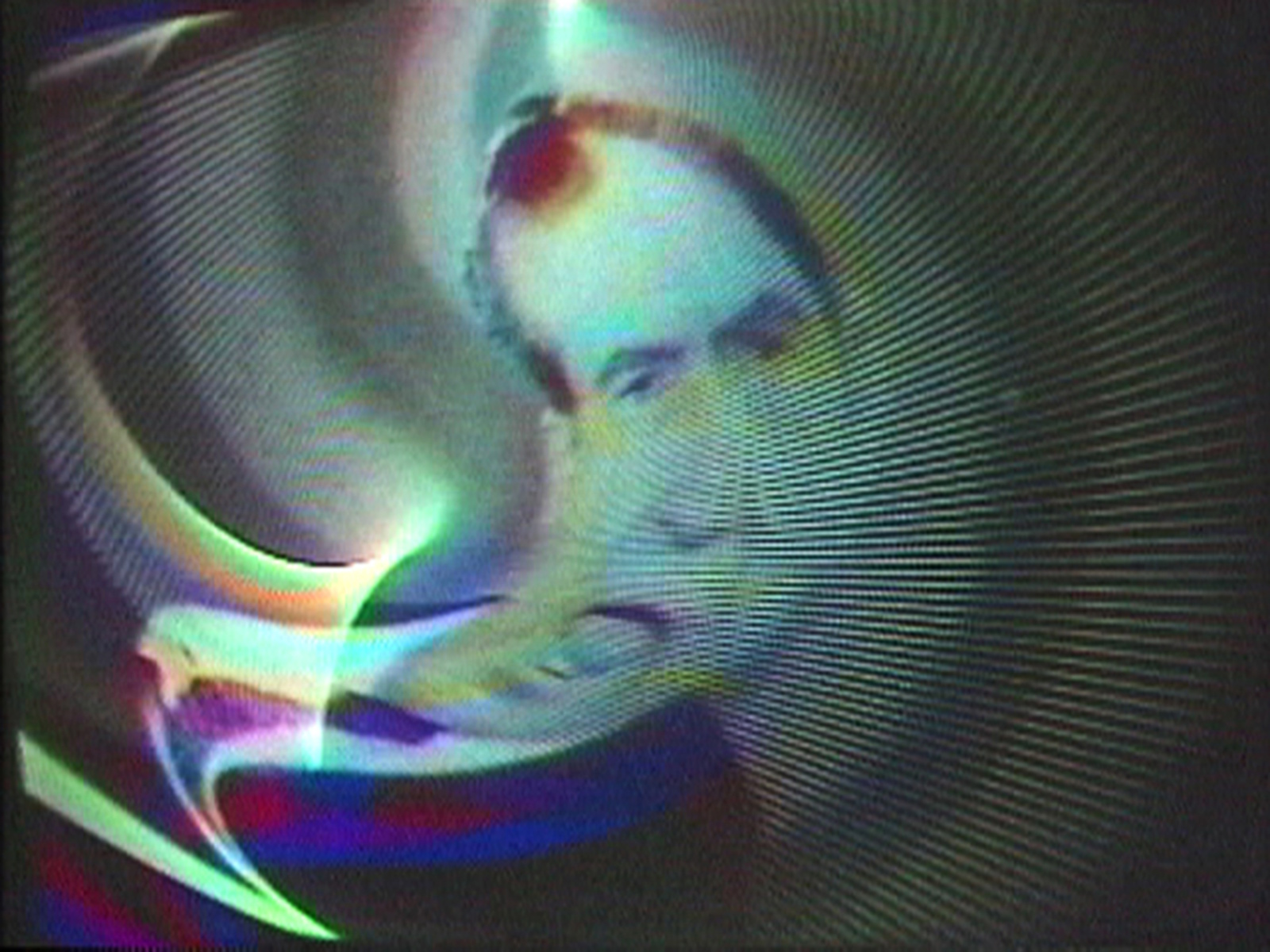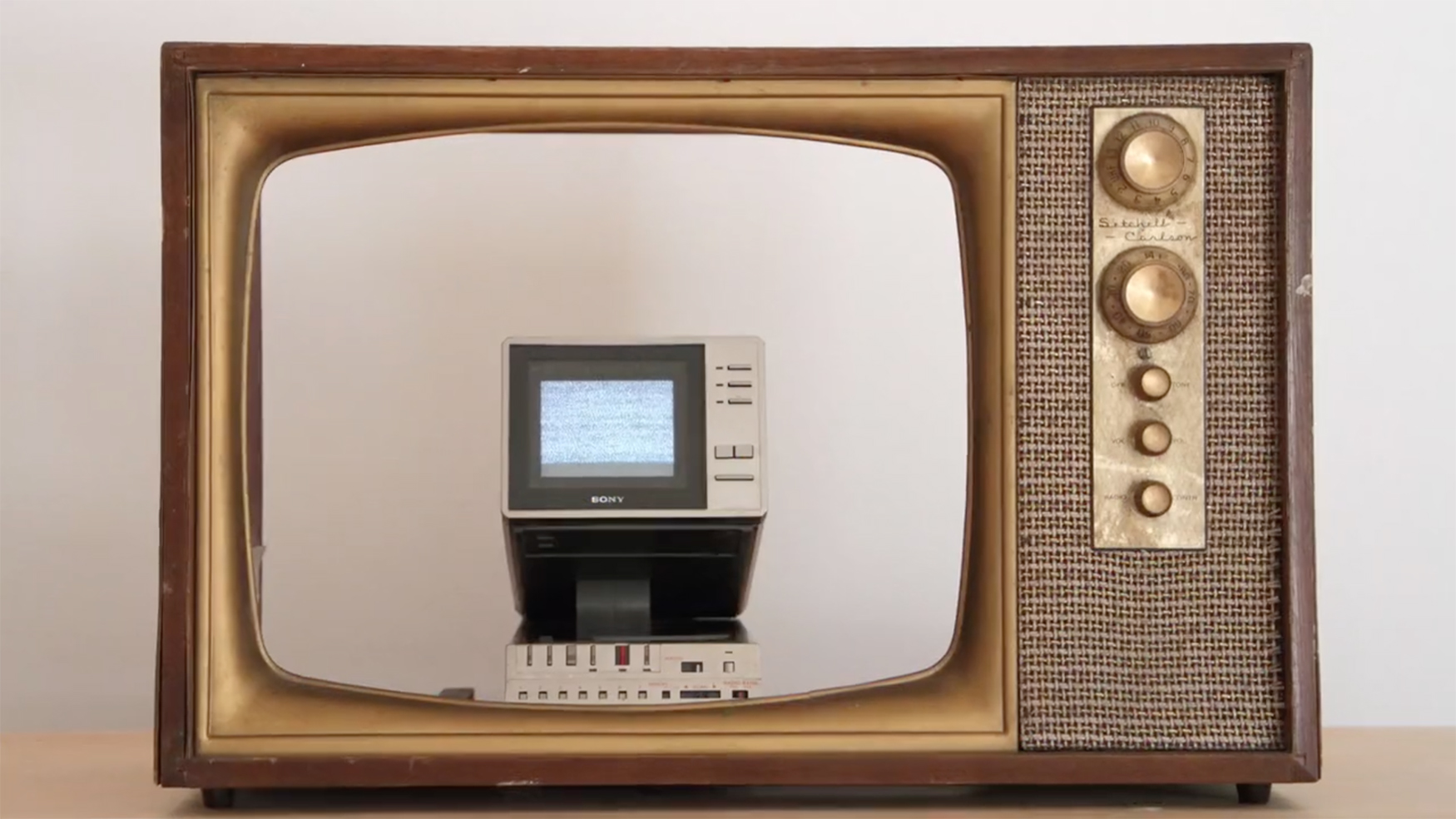Nam June Paik: Screen Play
Nam June Paik, Untitled, 1993–95. Laser print on canvas with Sony Watchman TV, tin robot, acrylic paint, and oil pastel. Source photograph by Peter Moore. Harvard Art Museums/Fogg Museum, Gift of the Hakuta Family, 2017.154. © Nam June Paik Estate.
Nam June Paik: Screen Play presents a group of works by groundbreaking global artist Nam June Paik (1932–2006). Paik was born in Korea but spent much of his life in the United States; his practice combined music, performance, sculpture, painting and drawing, video, and broadcast television, among other media.
Drawn almost entirely from the Harvard Art Museums collections, the exhibition reveals the striking breadth of Paik’s oeuvre from the 1960s through early 2000s. Eight of the works featured are recent gifts from Ken Hakuta (M.B.A. ’77), the artist’s nephew; he has generously established the Nam June Paik Fellowship to expand knowledge about the artist, his work, and his influences. The objects on view—many of which are being exhibited at the museums for the first time—include TV Crown (1965/99), a television modified to visualize sound waves on its screen, and an iconic TV Buddha (2004), part of the artist’s exploration of closed-circuit television. Together, they represent themes central to Paik’s work, including the subversion of conventional technologies and media, the potential of moving images to explore alternative temporalities, and technology’s concern with aging and obsolescence. The works also demonstrate Paik’s playful, often ironic approach.
In addition, the exhibition draws attention to Paik’s enduring interest in artistic collaboration, from his early association with John Cage and others active in the postwar avant-garde music scene to his lifelong friendships with Charlotte Moorman and Joseph Beuys. Several works on view relate directly to the artist’s involvement with the Fluxus group, whose interest in revolutionizing artistic distribution had a lasting influence on Paik’s thinking. The exhibition also features two videos that the artist made in conjunction with WGBH, Boston’s public television station, where he developed some of his most important projects in the late 1960s and early ’70s.
Curated by Mary Schneider Enriquez, Houghton Associate Curator of Modern and Contemporary Art, and Marina Isgro, Nam June Paik Research Fellow, Harvard Art Museums.
Support for this project was provided by the Rosenblatt Fund for Post-War American Art, the José Soriano Fund, the Agnes Gund Fund for Modern and Contemporary Art, and the M. Victor Leventritt Fund. In addition, modern and contemporary art programs at the Harvard Art Museums are made possible in part by generous support from the Emily Rauh Pulitzer and Joseph Pulitzer, Jr., Fund for Modern and Contemporary Art.
Share your experience on social media: #NamJunePaik #HarvardArtMuseums
Online Resources
Learn more about the exhibition through an introductory video and a filmed lecture by Kate Lewis, the Agnes Gund Chief Conservator at the Museum of Modern Art in New York, discussing the challenges of caring for time-based media art—both available on Vimeo.
Exhibition Objects
1995.540: In Memoriam George Maciunas
Multiples
1995.540.1: Felt Wedge from the portfolio "In Memoriam George Maciunas"
Multiples
1995.540.2: Primeval Piano, from the portfolio "In Memoriam George Maciunas"
Multiples
1995.540.3: Piano Duet, from the portfolio "In Memoriam George Maciunas"
Multiples
1995.540.4: Certificate for Primeval Piano, from the portfolio "In Memoriam George Maciunas"
Multiples
1995.660: Piano Duet
Multiples
1995.722.A-B: 24 Hours
Books
2014.210: Cello Memory
Sculpture
2014.211: Fluxus Express
Sculpture
2014.212: Untitled (Desk)
Sculpture
2017.148: White TV
Sculpture
2017.149: Untitled
Sculpture



